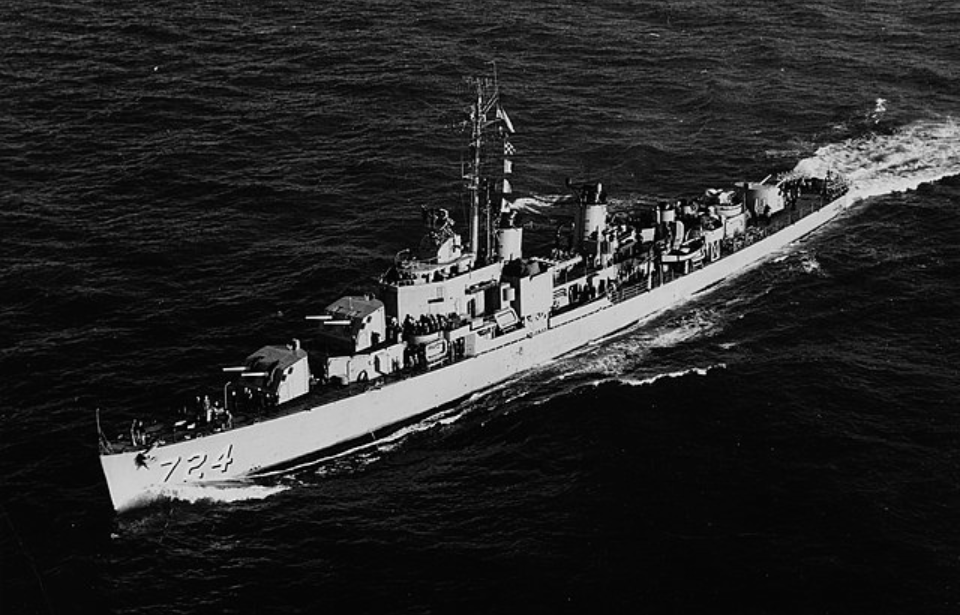A number of US Navy vessels are named for veterans who served their country gallantly and with valor. That being said, few live up to the status and reputation of their namesakes. One that did was the USS Laffey (DD-724), named for Sman. Bartlett Laffey, a Medal of Honor recipient. The destroyer participated in a number of engagements throughout World War II and beyond, and her success earned her the nickname, “The Ship That Would Not Die.”
USS Laffey (DD-724) specs
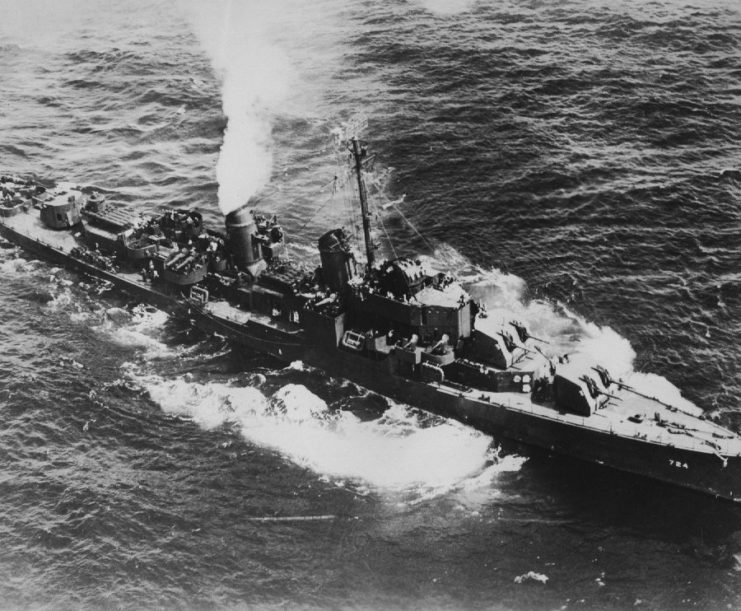
The USS Laffey was actually the second vessel to be named after Bartlett Laffey, an Irish-born US Navy sailor who earned the Medal of Honor for his actions against the Confederates during the American Civil War. The first was the destroyer USS Laffey (DD-459), which was sunk on November 13, 1942, during the Naval Battle for Guadalcanal.
Laffey‘s keel was laid down by Bath Iron Works Corp. in Bath, Maine on June 28, 1942, and she was launched a few months later under the sponsorship by Beatrice F. Laffey, the daughter of her namesake. In February 1944, she was commissioned, with Cmdr. Frederick Becton at the helm.
When complete, Laffey had a displacement of 2,200 long tons and could house a crew of 336. She was also heavily-armed, with 12 Bofors 40 mm anti-aircraft guns, two depth charge tracks, ten 21-inch torpedo tubes, six 5-inch/38-caliber dual purpose guns, six depth charge projectors and 11 Oerlikon 20 mm anti-aircraft cannons.
Deployed to Europe for D-Day
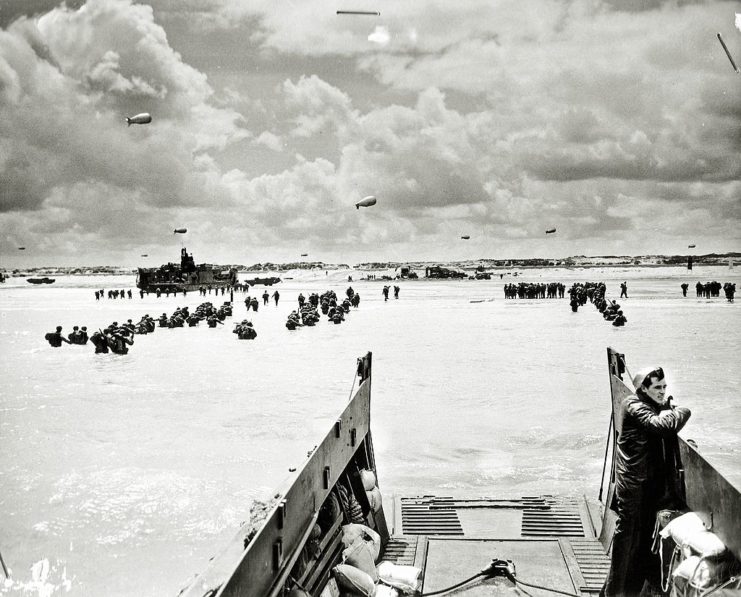
Upon arriving in Plymouth, England on May 27, 1944, the USS Laffey began preparations for the Allied landings. She departed for France on June 3 with landing craft, tugs and two Dutch gunboats, arriving off the coast of Utah Beach before dawn on June 6.
Between June 6-7, Laffey screened at seaward, after which the destroyer succeeded in bombarding German gun emplacements. After a quick replenishment back in Plymouth, she returned to the action, chasing E-boats (German fast attack craft) responsible for torpedoing the USS Nelson (DD-623).
As the Battle of Normandy moved inland, Laffey, along with the USS Nevada (BB-36), joined Bombardment Group 2 for the Allied shelling of Cherbourg-Octeville. The vessels immediately came under fire from shore installations, with the USS O’Brien (DD-725) and Barton (DD-722) sustaining damage. Laffey was also struck, but the shell failed to explode.
The USS Laffey (DD-724) is transferred to the Pacific Theater
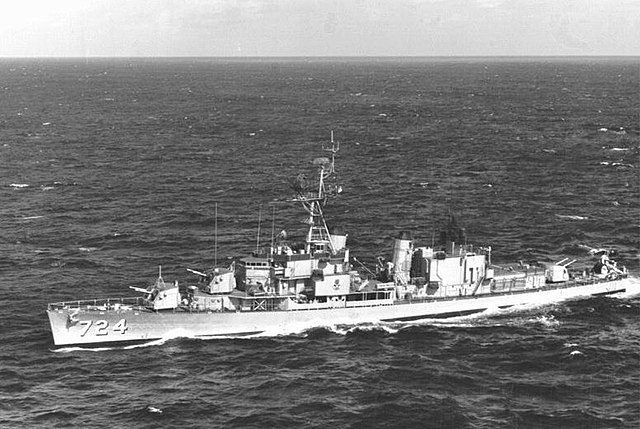
Following her service in the European Theater, the USS Laffey was deployed to the Pacific, where she took part in a number of engagements against the Japanese. In November 1944, she conducted strikes against shipping, air fields and aircraft in the Philippines as part of Task Force 38 (TF 38), and even rescued an injured enemy pilot.
On November 27, Laffey traveled to the Leyte Gulf as part of Destroyer Squadron 60 (DesRon 60), and teamed up with the 7th Fleet to screen against enemy submarines and aircraft, as well as attack Japanese troop concentrations and shore emplacements. She then aided in the US landings on Mindoro, before returning to Leyte.
In January 1945, Laffey rejoined the 7th Fleet, conducting screening operations in the Lingayan Gulf. A month later, she joined Task Force 58 (TF 58) in support of air strikes against Tokyo and the Battle of Iwo Jima.
Surviving kamikaze attacks during the Battle of Okinawa
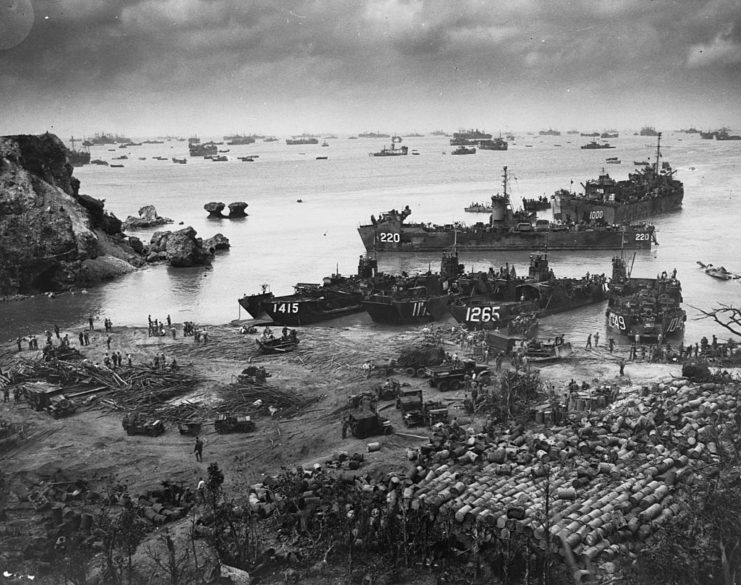
Toward the end of March 1945, the USS Laffey joined Task Force 54 (TF 54) for the Battle of Okinawa, an engagement that would prove to be her defining moment. After aiding in the capture of Kerama Retto, she was assigned to radar picket station 1 to aid in fighting back against a Japanese air attack.
The following day, April 16, 1945, the Japanese launched a 50-aircraft-strong assault. Beginning at 8:30 AM, it started with the arrival of an Aichi D3A Type 99 Carrier Bomber conducting reconnaissance. The aircraft was fired upon and quickly left. Shortly after, four more arrived and dived toward Laffey. Three were shot down by the destroyer’s deck guns, while the fourth, coming from the stern, became damaged after its landing gear caught the water.
Laffey‘s crew subsequently shot down two approaching Yokosuka D4Y Suisei, followed by two D3As, one that slightly struck the destroyer prior to crashing into the ocean and another that crashed into the ship, killing three crewmen and destroying a number of deck guns.
The D3As continued to attack, with varying degrees of success. To protect Laffey from the onslaught of kamikazes, four Grumman FM-2 Wildcats from the USS Shamrock Bay (CVE-84) and 12 Vought F4U Corsairs joined the fight. The latter aircraft shot down several D3As, D4Ys and Nakajima Ki-43 Hayabusa, at the loss of just two of their own.
When all was said and done, Laffey had suffered strafing, six kamikaze strikes and four bombings – and lived to tell the tale. Of the 336 crewmen aboard her during the attack, just 31 were killed, while another 71 suffered various injuries. As a result of the destroyer’s perseverance, she received the nickname, “The Ship That Would Not Die.”
Operation Crossroads, Korea and the Suez Crisis
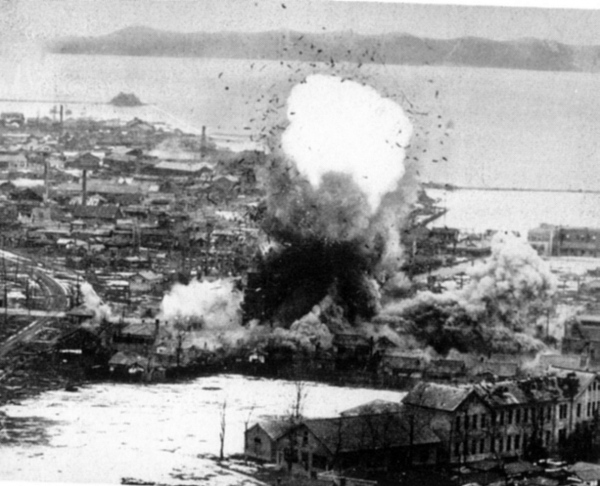
Following the Second World War, the USS Laffey collected data as part of Operation Crossroads, the US military’s atomic tests at Bikini atoll. After being decontaminated, she was decommissioned and placed in the Pacific Reserve Fleet.
She didn’t remain that way for long, however, as she was reactivated during the Korean War. Arriving in March 1952, Laffey was part of Task Force 77 (TF 77) and charged with screening the USS Antietam (CV-36) and Valley Forge (CV-45). Just a few months later, she took part in the Blockade of Wonsan as a member of the bombardment and blockade group. Despite being under heavy enemy fire, she and her crew successfully conducted counter-battery attacks against the North Koreans.
Laffey‘s next major conflict was the Suez Crisis in 1956, when, while a member of the 6th Fleet, she was sent to patrol the Israeli-Egyptian border. That was followed by just under two decades of routine patrols and exercises. On March 9, 1975, the destroyer was decommissioned and stricken.
Over the course of her service with the US Navy, she’d been awarded seven battle stars, two Presidential Unit Citations, the Meritorious Unit Citation and three Battle “E” Awards.
The USS Laffey (DD-724) was preserved as a museum ship
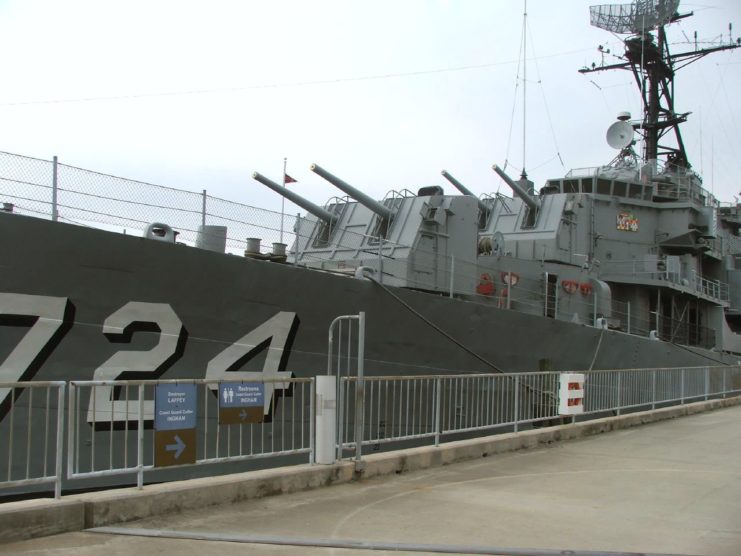
Following her decommissioning, the USS Laffey was designated a National Historic Landmark, but not before making a cameo in John Carpenter’s 1984 film, The Philadelphia Experiment. That actually wasn’t the only time she would feature in cinema, as, in 2018, Mel Gibson announced he’d be directing a film about the Japanese attack on Laffey, titled Destroyer.
More from us: HMS Victory: The World’s Oldest Warship Still In Commission
Presently, Laffey serves as a museum ship and can be toured by the public at Patriots Point Naval & Maritime Museum in Mount Pleasant, South Carolina.
